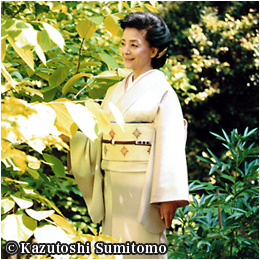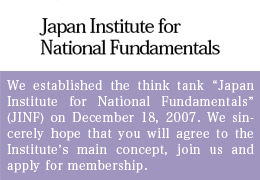China’s Military Threat as Seen in Its 2010 National Defense White Paper
On April 1, a small China State Oceanic Bureau propeller plane flew dangerously close to the Japan Maritime Self Defense Force (JMSDF) destroyer Isoyuki, which was patrolling the high seas near the demarcation line between Japan and China in the East China Sea. A few days before, a Chinese helicopter came very close to the same destroyer.
According to JMSDF sources, the small propeller-driven Chinese aircraft circled near the destroyer twice and came within 60 meters vertically and 90 meters horizontally of the ship, flying across its course twice – a breach of commonly observed international practice, which prohibits aircraft from flying within 150 meters above and 450 meters away from ships.
China’s purpose is obvious: it intends to reinforce – unjustly – China’s claim over the Senkaku Islands and the Japanese portion of the East China Sea. Ultimately, China plans to wrest this area from Japan. Looking at how relationships between China and its neighbors have evolved, one sees clearly that once Beijing sets an objective for itself, it doesn’t give up. Examples include China’s annexation of Tibet and Uighur, development of nuclear weapons, and advances into the ocean and space. China never quits – until they get the desired results.
China adheres to its own principles, which are often at odds with international norms. China’s strategy reveals its intentions: namely, a massive and expansionist military build-up.
China’s biennial defense white paper, China’s National Defense in 2010, published on March 31, 2011 by China’s State Council, reveals the long term objectives of the Communist state. This latest edition of the white paper on China’s defense, which Beijing has made public since 1998, blatantly reveals the real intentions of China – like armor showing from under the cloak of nicely-worded principles.
At China’s National People’s Congress, opened in Beijing on March 5, the Communist Party of China (CPC) announced that China’s defense expenditure this year will increase 12.7 percent over last year. China has implemented a double-digit military buildup almost every year for the past 23 years. The white paper stresses that China’s aggressive increases in its military budget are strictly for defensive purposes. The white paper also emphasizes that China now stands at “a new historical” crossroads, where “China’s development (will be linked) with that of the world.” It further states China’s security and peaceful development will constitute a force to create “a harmonious world of lasting peace and common prosperity.”
China: Policy Not Based on Facts
The white paper calls the next decade “a period of important strategic opportunities” for China. It reflects Beijing’s determination to forge ahead with a policy for enriching the country and strengthening the military.
The paper’s tone exudes confidence and associates China’s national strategy with such lofty notions as “peace,” “development,” and “harmony.” One should not, however, take its protestations at face value. It describes China’s strategy as “defensive in nature” at the outset of Chapter 2, entitled “National Defense Policy.” The white paper refers to the role of the People’s Liberation Army (PLA) as “the sacred duty” of resisting foreign aggression and safeguarding the security of society, declaring:“To build a fortified national defense and strong armed forces…is a strategic task of China’s modernization.”
The white paper repeatedly stresses China’s “no first strike” (i.e., no preemptive attack) policy. It claims that its fundamental approach is a purely defensive strategy and it seeks non-military measures in settling international disputes. But China is the only nation that has expanded its territories by military means since the end of World War II, making a big hole in its claims of “defensive military power” and “no first strike policy.” Consider what China has gotten away with over the past 60-odd years.
China’s intervention in the Korean War in 1950 – a year after its founding as a new nation – is a prime example. Its avowed purpose then was to “resist the United States and aid (North) Korea.” Actually, the Korean War erupted because North Korea invaded South Korea. Nothing can be farther from the truth than the Chinese claim that the alleged “U.S. invasion” led to the war.
In 1962 China fought India over border issues; in 1969 it fought the Soviet Union – again over border issues; and then in 1979 it attacked Vietnam to “punish it.” In all these cases China contended its military actions were “self-defense counter attacks.” No wonder its neighbors are indignant with China, whose claims are not at all based on facts.
In its Annual Report to Congress last year, the U.S. Department of Defense analyzed China’s “no first strike” policy and made some interesting findings. The following quote is one the Department of Defense took from Science of Military Strategy (the first English language volume on strategy by the PLA, a translation published in 2005 by the Military Science Publishing House of Beijing):
“Striking only after the enemy has struck does not mean waiting for the enemy’s strike passively…It doesn’t mean to give up the ‘advantageous chances’ in campaign or tactical operations, for the ‘first shot” on the plane of politics must be differentiated from the ‘first shot’ on that of tactics…If any country or organization violates the other country’s sovereignty and territorial integrity, the other side will have the right to ‘fire the first shot’ on the plane of tactics.”
China in effect vows that, in case its sovereignty or any part of its territory is “politically” infringed, it will automatically regard such an act as a first strike by the “enemy” and will swiftly implement its own “tactical” first strike in response.
Time for a Japanese Renaissance
Considering the above, the more often China repeats “national defense purely for defensive purposes” and “no first strike policy,” the more one comes to doubt their sincerity. China seems ready to strike first.
As we mentioned at the outset of this column, China continues to claim sovereignty over the Senkaku Islands and the Japanese portion of the East China Sea and shows no signs of terminating provocative acts against JMSDF ships. Japan should consider that China could one day attack Japanese ships engaged in regular patrolling operations while claiming that the ships violated China’s sovereignty.
The white paper also reiterates China’s long-term determination to unify with Taiwan. China has already deployed 400,000 troops along the Straits of Taiwan – more than three times the 130,000 Taiwanese army troops on the other side. Clearly, the balance of power in the Straits of Taiwan has tipped heavily in China’s favor, with more than 1,400 Chinese missiles, capable of mounting nuclear warheads, ominously aimed at Taiwan.
China, however, has certain weaknesses. Beijing has built powerful armed forces – army, navy, and air force – but still is not able to integrate these forces efficiently.
The afore-mentioned U.S. Defense Department analysis pointed out the inability of the PLA commanders to carry out integrated operations in times of crisis. China is in a great hurry to make up for these shortcomings. The Chinese white paper carries candid references to such efforts, reflecting considerable confidence in themselves.
The paper notes the PLA is “further implementing the strategic project for talent” to “increase its complement of new-type and high-caliber military personnel” capable of expertly running the entire Chinese armed forces. It emphasizes the need for solid political education, making young soldiers aware of the importance of one day shouldering the burden for the state. It explains the special efforts must be made to foster commanders, support staff, scientists, technical experts, non-commissioned officers, and computer specialists who can visualize what a new army should be like in the information era. The PLA wants personnel well versed in information technology, as well as the operation and maintenance of new equipment.
Disaster-hit Japan also needs such a human resource development project on a grand scale. We must concentrate on cultivating new and dynamic talent needed for a wholesale national rejuvenation – people who are capable of shouldering the burden for society and the state in such a time of crisis as now. Instead of flinching from the powerful rise of our neighbor, we must create a new foundation for a new Japan — one aided by talented and committed citizens who will make their nation better and stronger.
(Translated from “Renaissance Japan” column no. 456 in the April 14, 2011 issue of The Weekly Shincho.)








